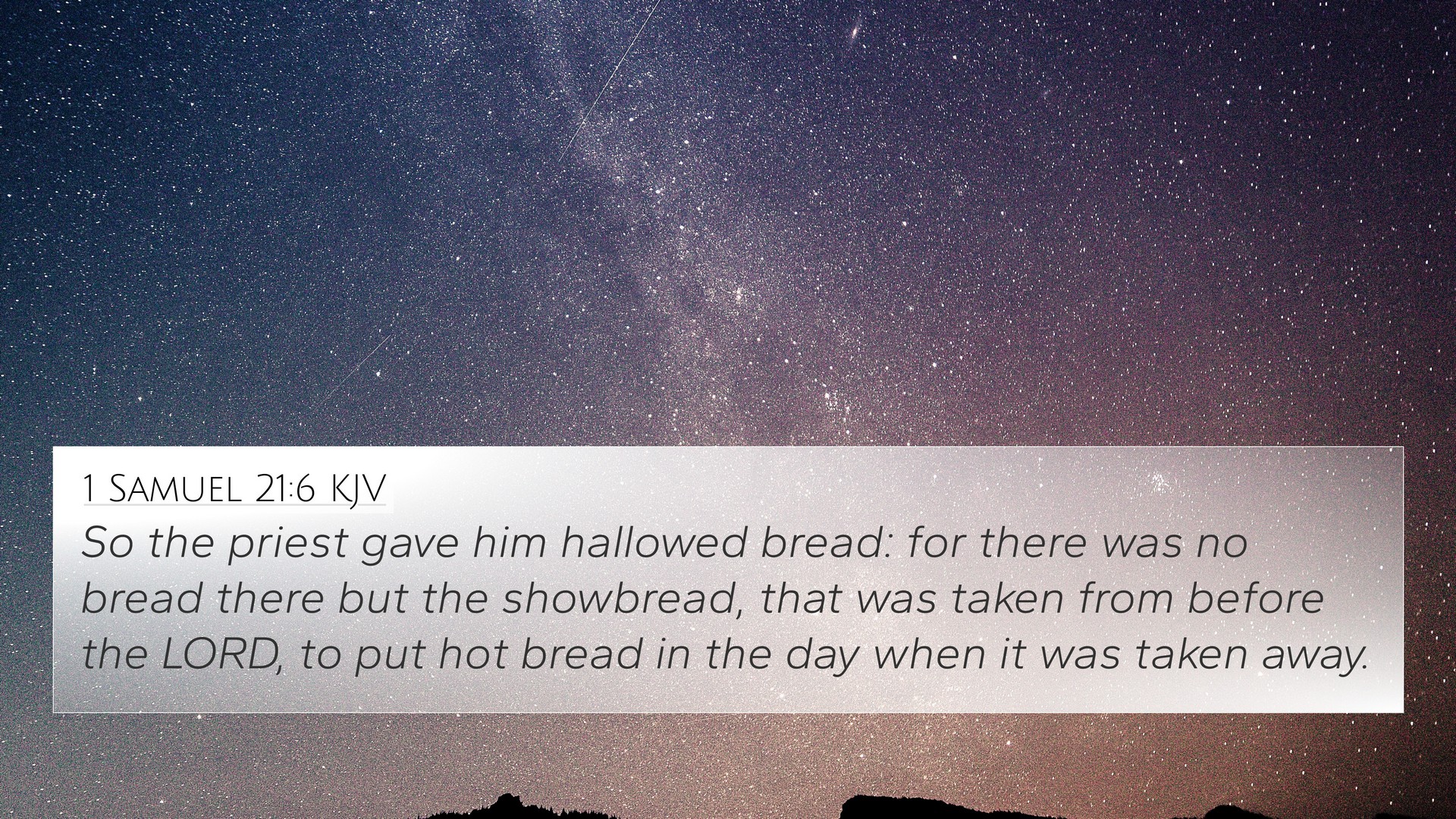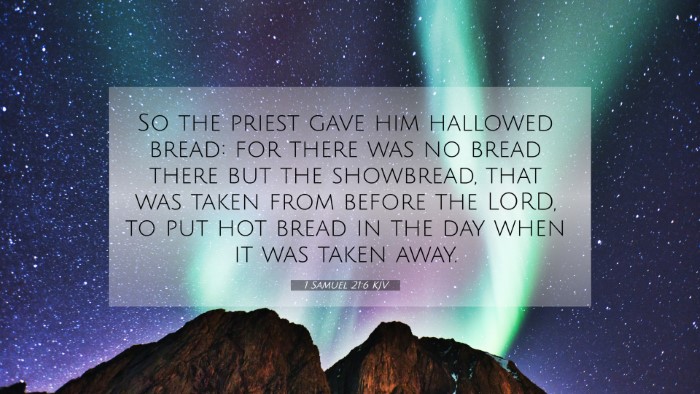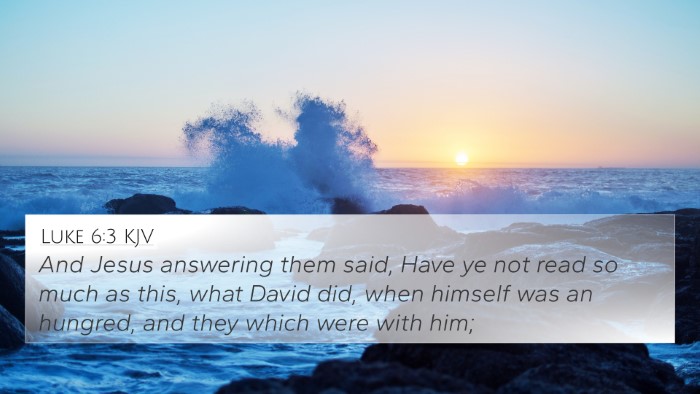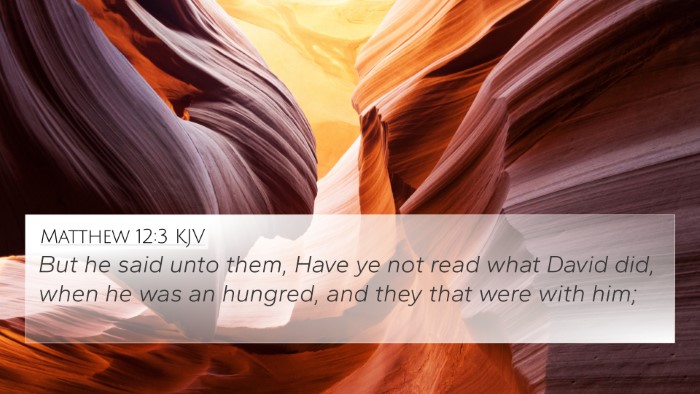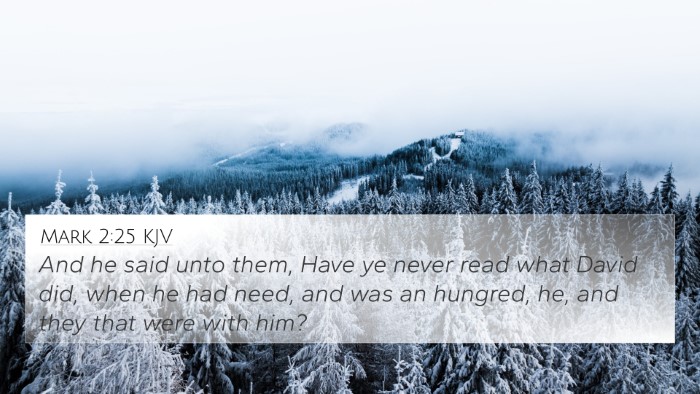Understanding 1 Samuel 21:6
1 Samuel 21:6 states: "So the priest gave him hallowed bread; for there was no bread there but the shewbread, that was taken from before the Lord, to put hot bread in the day when it was taken away."
Meaning and Insights
This verse conveys a significant moment wherein David is in need and seeks assistance from Ahimelech, the priest at Nob. The act of giving David the shewbread presents several theological and practical insights.
- Ordained provisions: The provision of hallowed bread points to God's care for His people, even in dire circumstances. The shewbread was typically reserved for the priests, emphasizing the extraordinary nature of this allowance.
- Human necessity: The account illustrates the principle that human need can supersede ceremonial law. The priest’s decision reflects a compassionate understanding of God’s intent behind the law.
- Types of Christ: David, here, can be seen as a type of Christ. He receives sustainment (bread) during a time of crisis, hinting at Jesus being the Bread of Life (John 6:35).
- Faith in action: David's reliance on God's provision even when fleeing from Saul highlights the faith that believers are called to exhibit in times of trial.
Cross-References
This verse relates to several other scriptural passages, encouraging thematic connections and deeper understanding through inter-Biblical dialogue:
- Leviticus 24:5-9: Discusses the preparation of the shewbread and its purpose within the tabernacle.
- Matthew 12:3-4: Jesus uses this story of David to illustrate the principle that mercy triumphs over ritual.
- John 6:48-51: Jesus proclaims Himself as the Bread of Life, drawing parallels to the sustenance provided to David.
- Psalm 37:25: A reflection on God's providence, emphasizing that the righteous will not go hungry.
- Hebrews 5:1: Discusses the role of priests in offering gifts and sacrifices, connecting to the priestly duty of Ahimelech.
- Matthew 26:26: As Jesus breaks bread at the Last Supper, it ties back into thematic connections of sustenance.
- Luke 4:16-21: Refers to Christ’s proclamation of fulfilling the scriptures, showing His alignment with David's narratives.
- 1 Corinthians 10:1-6: Discusses the lessons derived from Israel's history, including the provision of food in the wilderness.
- Exodus 16:4-36: Describes God's provision of manna, which can be understood as a precursor to the concept of divine sustenance.
- John 15:5: Jesus' assertion of being the vine reflects the necessity of spiritual sustenance that parallels physical provision through shewbread.
Thematic Connections and Interpretations
The account of David and Ahimelech serves as a powerful illustration of themes prevalent throughout the Bible, supported by tools for Bible cross-referencing:
- The necessity of mercy: This theme runs through the Gospels, showing Jesus's emphasis on mercy over sacrifice (Matthew 9:13).
- The spirit of the law vs. the letter of the law: The narrative underscores the importance of understanding intent behind God's commandments.
- God's provision in times of need: 1 Samuel 21:6 ties into numerous passages that show God providing for His people, recurring in both the Old and New Testaments.
- Inter-Biblical dialogue: The connections between David's hunger and Jesus’ teachings represent a continuity in God's plan for salvation and sustenance.
Conclusion
1 Samuel 21:6 encapsulates a significant moment in David's life that resonates with themes of providence, mercy, and divine sustenance. Through comparative Bible verse analysis, one can discern the depth of God's care and provision across both the Old and New Testaments. This verse serves as a reminder of God’s unceasing faithfulness in providing for those who earnestly seek Him.
Additional Resources for Cross-Referencing
For those interested in exploring more about Bible cross-referencing, the following tools and methods can be particularly useful:
- Bible concordance: A comprehensive tool for locating verses and their contexts.
- Bible reference resources: Guides that assist in finding themes and connections.
- Cross-reference Bible study methods: Various approaches to deepen one’s understanding.
- Bible chain references: Techniques to link verses that share common themes or ideas.
- How to find cross-references in the Bible: Learning techniques for efficiently locating thematic connections.
